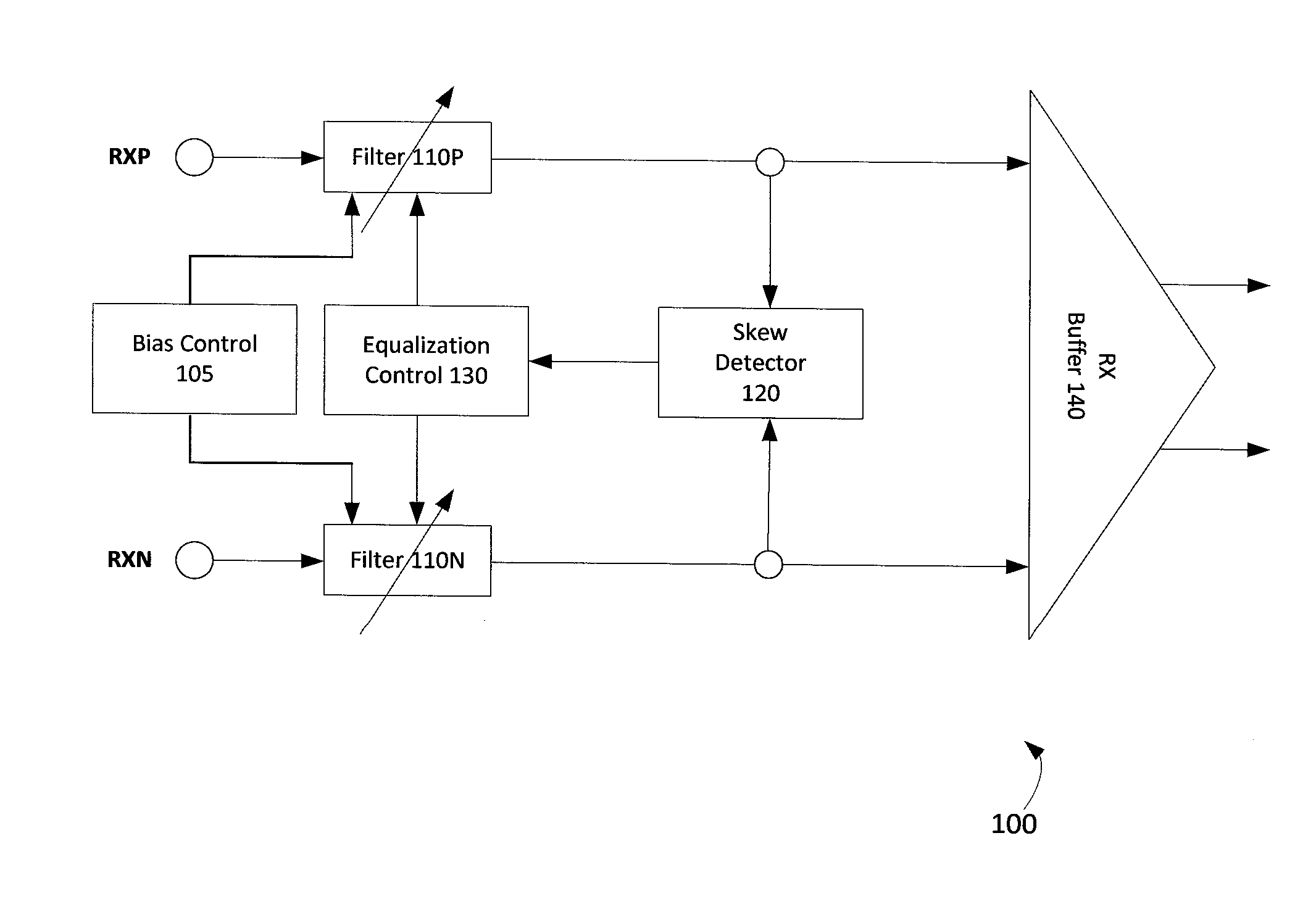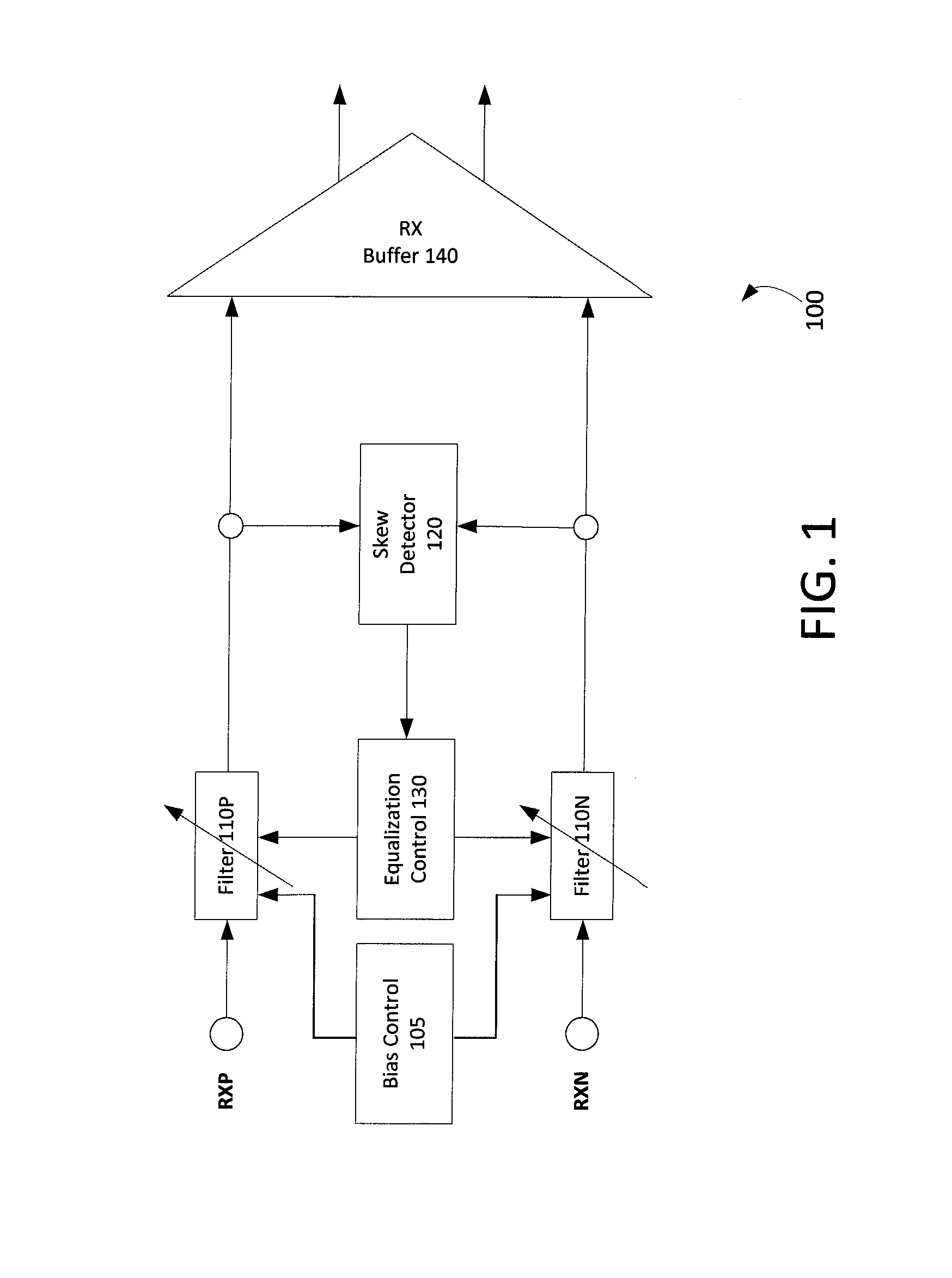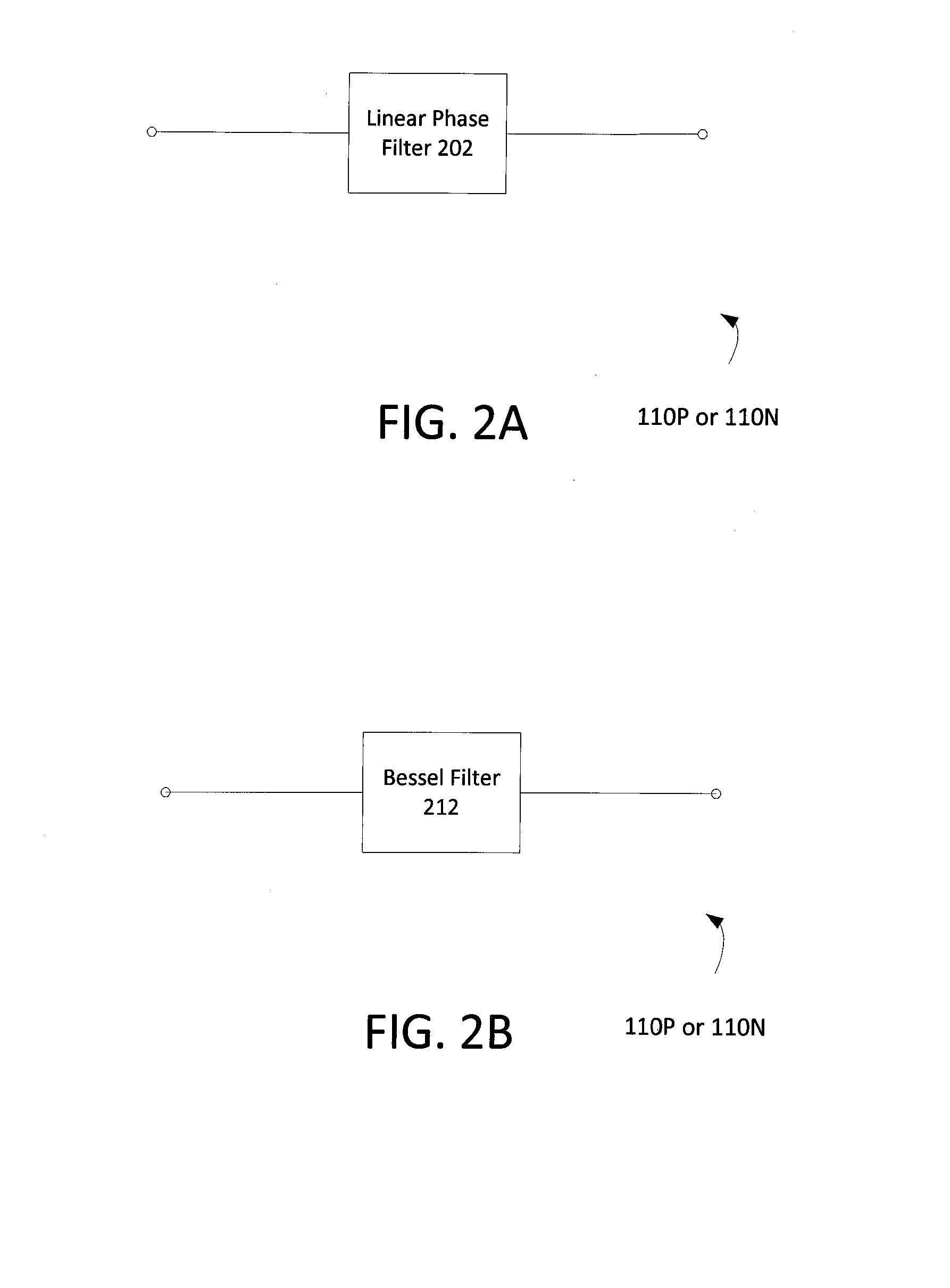Apparatus and methods for adaptive receiver delay equalization
a receiver delay and receiver technology, applied in the field of communication links, can solve problems such as differential skew, differential skew, differential skew,
- Summary
- Abstract
- Description
- Claims
- Application Information
AI Technical Summary
Benefits of technology
Problems solved by technology
Method used
Image
Examples
Embodiment Construction
[0019]The present disclosure provides methods and circuit apparatus which adaptively equalize the delays in the positive and negative paths of a differential receiver. The methods and apparatus described herein advantageously provide an on-die solution which removes receiver differential skew in an automatic manner to compensate for non-ideal effects in actual circuits, such as unequal conductor lengths and unmatched twists.
[0020]FIG. 1 is schematic diagram of an exemplary apparatus 100 for adaptive receiver delay equalization in accordance with an embodiment of the invention. The apparatus receives a differential signal and adaptively equalizes delay on positive and negative paths to de-skew the differential signal. As shown, the apparatus 100 includes a bias control circuit 105, a first variable-delay filter 110P, a second variable-delay filter 110N, a skew detector 120, an equalization control circuit 130, and a receiver (RX) buffer 140.
[0021]Both the first and second variable-de...
PUM
 Login to View More
Login to View More Abstract
Description
Claims
Application Information
 Login to View More
Login to View More - R&D
- Intellectual Property
- Life Sciences
- Materials
- Tech Scout
- Unparalleled Data Quality
- Higher Quality Content
- 60% Fewer Hallucinations
Browse by: Latest US Patents, China's latest patents, Technical Efficacy Thesaurus, Application Domain, Technology Topic, Popular Technical Reports.
© 2025 PatSnap. All rights reserved.Legal|Privacy policy|Modern Slavery Act Transparency Statement|Sitemap|About US| Contact US: help@patsnap.com



